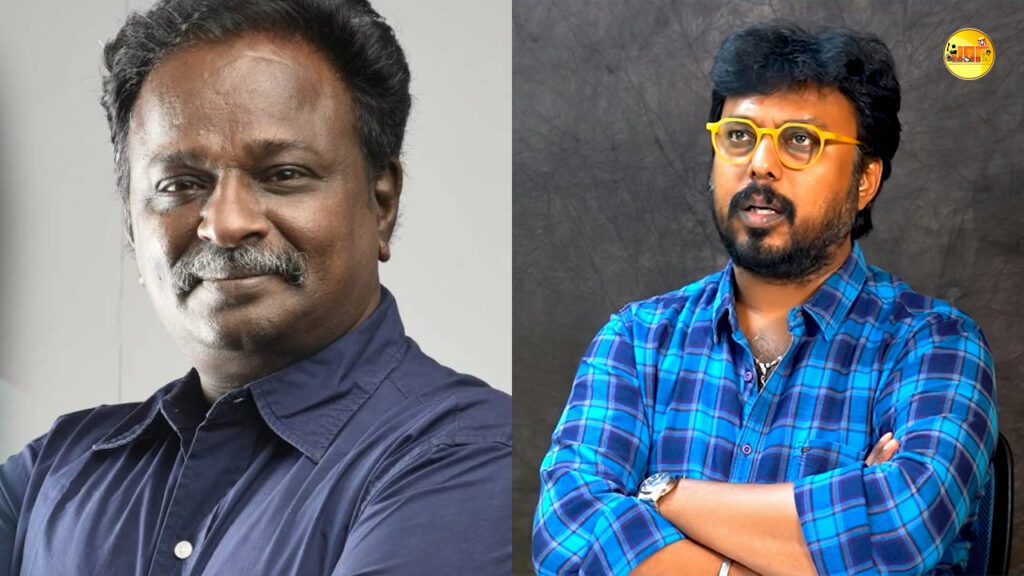In a recent interview, actor Adhavan provoked outrage when he publicly criticized established cinema critics Blue Sattai Maran and Prashanth Rangaswamy on social media. As per him, their reviewing is damaging to Tamil cinema especially smaller films through acting with what he perceives as cruelty or irresponsibility. He referenced a recent film, Kumarasambhavam, going so far to say it was a film with laughter and family in mind but critics missed the mark. This exchange has provoked strong reactions from the industry and from fans.

Let us examine more closely what Adhavan said, whom he addressed as reviewers, what possible consequences there were, and whether there is strain underlying contemporary creators and reviewers here.
What Adhavan Alleged: Criticism, Neglect & Responsibility
- He mentioned that critics like Blue Sattai Maran operate in a manner “which metaphorically kills the entire Tamil cinema business.” He wondered why low-budget films are not given due attention from them.
- Referring to Kumarasambhavam as an example, Adhavan rued how while the film was meant as a light-hearted, family entertainer, “not a single reviewer mentioned anything positive about it. It ran in a single show in a single theatre.”
- He questioned out loud whether it’s possible to ask Blue Sattai Maran directly, “Why are you destroying all people’s livelifes?” He argued their critical voice is occasionally unsympathetic, unfair, or unbalanced.
- Commenting on the general Tamil movie-making scenario, Adhavan alleged that there has been a decline in producers, and Telugu producers are more dominant. He called upon Tamil identity supporters to support Tamil cinema and Tamil actors. He stated that there should be at least a good movie every week to entertain and keep the spirit alive.
- He pressed critics to set an example. “We also have our responsibilities. Four people watch us; you have to take care. If critics do not help out, cinema will die.”
He pressed critics to set an example. “We also have our responsibilities. Four people watch us; you have to take care. If critics do not help out, cinema will die.”
Background: Blue Sattai Maran & Prashanth Rangaswamy in the Tamil Critic Ecosystem
In pursuing Adhavan’s grudge, it is useful to have an idea of who the critics mentioned were, and their locations in the Tamil cinema deba
- Blue Sattai Maran is also a Tamil film critic and YouTube personality known for brusque, occasionally contrarian opinions. His handle (Blue Shirt/Maran) reflects an established brand in the Tamil review
- Prashanth Rangaswamy is another active film critic with lucid and sometimes critical commentary. He actively posts reviews, commentary, and contributes to industry discussion on X/Twitter.
- In some earlier cases, critics have evoked vituperation when their responses influenced audience perception immensely, especially with smaller films. Adhavan’s argument is that such critics also wield more power and should put their responses to use in a balanced way.
If a medium has so much power, say creators, then it also has a responsibility. The timeless fight with the critic’s freedom vs. the critic’s responsibility gets escalated with Adhavan’s public naming in an age of social media.
Industry & Public Reactions
- Small filmmaker support: Some who have been through bad reviews or marketing may empathize. They find a sympathetic voice as Adhavan is defended.
- Responding critics: Some critics might say in their defense that their work is non-promotional but appraisal-oriented.
- Media commentary: Entertaiment websites might discuss whether criticism go too far. News articles could pose: “Do critics wield too much influence?” or “Creators vs critics during the social media era.”
- Fan response: Adhavan’s fans might take his comments to the next level, while critics’ fans could rally their critics of preference—divisive debates.
Such tension is common in arts-based industries, particularly when there are emotional and monetary stakes.
What This Reveals About Tamil Cinema Today
Adhavan’s critique speaks to deeper structural stresses:
- The marketplace is competitive. Smaller screens mean strong competition, and ad costs are high. Films take all possible opportunities just to be seen.
- It’s instant and amplified feedback over the internet. Your review on Twitter or YouTube can go viral before the first preview.
- Smaller movies are more reliant on word of mouth, social media buzz, and micro audiences. Anything negative written early can squelch momentum.
- Politics of identity of Tamil cinema—regionalism, native storyteller promotion—often fuels such debates as Adhavan’s. He links cultural identity (“Tamil men should patronize Tamil cinema”) with his appeal.
In short, the ecosystem is volatile, and creators are exposed. This collision is just one manifestation of their pressure.
